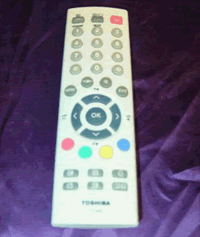You may use this content (better still, argue with me!), but please cite my ideas as (c) 2005, Dr. Bruce Klopfenstein.
As more and more people read this blog, I have to fight what I was taught by my parents of the Greatest Generation, and that is to be humble. I don't know it all and learn new things every day, but I do have a lot of research and experience from which to draw.
One example of my expertise that probably outdoes any other academic in my field is that I took a seasonal sales job at a large, national chain store that gets most of its profits from home theater where I worked. This is what's called participant observation. For 2 months I watched to see how people made up their minds in buying a new TV set, and especially how they tried to decide if it was time to step up to HDTV. It seemed that many of the HDTV purchasers were actually buying
their second or third HDTV. For the record, I personally believe this Christmas season will see a dramatic rise in the sale of HDTVs as the diffusion curve begins to accelerate.

Did you see my earlier post about the "odd love affair" with distorted aspect ratios (people taking a 4 by 3 traditional TV picture and stretching it to fit their 16 by 9 presumably HDTV monitor)? Well, here's another oddity. People are putting their new, plasma (or other) flat screen TVs
above their fireplaces! OK, we will hope they don't depend on the fireplace to heat the home, but that's now what amazes me.
All our lives we have basically had our main TV sets close to eye level when sitting or lying on the couch. Putting a larger screen above the fire place dramatically changes both the angle of viewing and, of course, the need for an interior decorator to reassign the furniture in the room, In fact, with the TV above the fireplace, we are returning the family to sitting around the hearth.
I haven't seen any recent research on back or neck strain related to watching the TV high on the wall, but if I work in this same home theater store again this pre-Christmas season, I will be asking if people are still buying the installation kits or, possibly, taking them down. Now remember when you were a kid lying on the floor with your head in your hands. Is that even possible with the TV set so high?

So once again, you've heard it here first. I personally speculate that people are thinking of these displays as being like paintings that are/were hung above the fireplace. This position also will do little, I would think, to encourage people to multitask on their wall screen (e.g., merge TV viewing with, say, chatting or email checking).
If anyone reading this knows what research has been done on the new hearth in the home, please post something here for all to read. I'll try to come pack to this post with an illustration. I know Russ Neuman and friends were arguing at MIT years ago that HDTV wasn't necessary as configured at that time because at typical viewing distances, the additional clarity was not all that noticeable.

 Thanks blogger community for solving my mysterious error. I'll hang on to
Thanks blogger community for solving my mysterious error. I'll hang on to 













